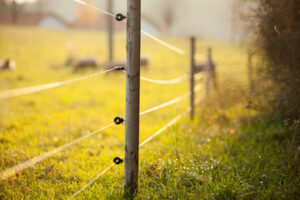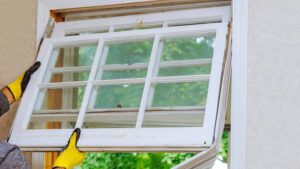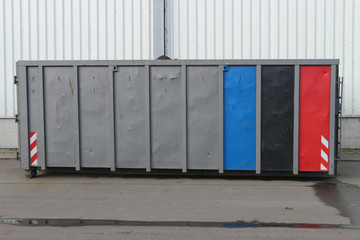Backlinks are a vital part of SEO and determine where your website ranks in search engine results pages. They also help to establish your content as trustworthy and reliable.
The quality of your backlinks also matters. Relevant and contextual links are considered more valuable by search engines. Read on Rank Boss for more information.
To make your articles more linkable, include research, studies, expert quotes, and unique information. This will improve the credibility of your article and increase its value to readers.
When it comes to boosting search engine rankings and building domain authority, link building is one of the most powerful tools available. But with so many tactics and strategies out there, it can be hard to know where to start. Fortunately, the right techniques can make your scalable link building strategy successful.
The first step is to create something of value that people will want to link to. This can be a blog post, tool, research study, or even an infographic. However, you should not focus on creating links for the sake of it. These should be a natural part of your marketing strategy and help you achieve your business goals.
Link building is a powerful tool that can boost your SEO rankings and drive organic traffic to your website. However, it is important to understand that it is not a short-term solution, and it takes time to see results. In addition, it is important to monitor the growth rate of your backlinks over time. Spikes or drops in this metric could indicate problems with your content or outreach strategy.
There are various methods to build high-quality links, including guest blogging, broken link building, and influencer outreach. However, you should always prioritize relevance and authority. This is because search engines will penalise websites that have irrelevant or spammy links, and they can easily spot these links.
Another way to improve your scalable link building strategy is to analyze your competitors’ backlink profiles. This can be done using tools like Ahrefs or Semrush. These tools can show you how your competitors’ backlinks are performing and where they come from. It is also crucial to pay attention to URL rating and domain rating, as these metrics can have a significant impact on SEO performance.
To ensure the success of your scalable link building strategy, it is essential to use a reputable digital marketing agency or team. These experts can provide valuable insights into your backlinks, helping you make data-driven decisions that will drive better results. In addition, they can free up your internal resources so you can focus on other important marketing initiatives.
Content marketing
Backlinking and content marketing are essential tools for improving website traffic. While they are different, they work well in tandem to boost SEO rankings. However, it is important to remember that not all backlinks are created equal. Poorly placed links can negatively affect your search engine optimization efforts, and may even lead to Google penalties. In order to avoid these penalties, it is essential to follow best practices and use an ethical approach when building backlinks.
To build quality backlinks, you need to create high-quality content that resonates with your audience. This means researching your niche and understanding your audience’s needs. Your content should provide answers to their questions or solve their problems, making it more likely to be shared and linked to. You can also create content around current trends to increase your visibility and improve brand awareness.
There are several ways to achieve this, including guest blogging, leveraging social media, and utilizing forum participation. These techniques will not only help you get more links, but will also increase the number of people who see your content. By generating web copy of the highest quality, you can position yourself as an expert in your field and gain credibility.
In addition, it is important to continually update your content to stay relevant and up-to-date. This will ensure that your content is still relevant and useful to users, even after a few years have passed. It is also helpful to research your niche to identify gaps in your content. By filling these gaps, you will make your site the go-to source for information on a particular topic.
Content marketing is a long-term strategy, but it’s not without its challenges. It requires a lot of time and effort to produce content that captivates audiences and earns links consistently. Moreover, it is vital to continue updating your content and experimenting with new formats. The content landscape is constantly evolving, and it’s vital to keep up with changes in distribution platforms and consumer preferences. To be successful, you must find a balance between relentless, high-quality publishing and calculated experimentation.
Social media marketing
Social media marketing, or SMM, is an important component of a digital marketing strategy. Its symbiotic relationship with SEO can skyrocket online visibility and brand awareness, resulting in higher search engine rankings. It is important to use a holistic approach to social media marketing, including both paid and organic campaigns.
Incorporating social media into a digital marketing strategy allows businesses to create backlinks, which are essential for improving website visibility. It also provides an opportunity to engage with the audience and cultivate relationships. The integration of social media in SEO strategies involves implementing relevant keywords, promoting content, and creating engaging posts. It also includes leveraging artificial intelligence (AI) to automate posting, sentiment analysis, trending hashtag suggestions, and other features that optimize profiles for optimal engagement.
Content that performs well on social media platforms is more likely to be shared, resulting in backlinks. To maximize the impact of your content, create shareable infographics and visuals. These are more likely to be shared by people outside of your niche and can increase the likelihood of gaining backlinks. Additionally, try to participate in industry-specific conversations on social media. This can help you establish yourself as an expert in your field and build relationships with other industry professionals.
Another way to increase the number of backlinks is to create a blog or resource page on your site. Adding a link to your resource page can improve the visibility of your website, and it will help your website climb the ranks in search engine results. If you are unsure about how to create a blog or resource page, you can contact a professional digital marketing agency to help you.
The most effective way to leverage social media for backlinking is to integrate it into your SEO strategy. This will involve creating shareable content, participating in industry-specific conversations, and running paid social media campaigns. It will also involve creating a social media calendar that aligns with your SEO keyword strategy. This will ensure that all your social media efforts are working together to increase website visibility and traffic.
Keyword research
Keyword research is an essential step in link building, allowing you to connect your content with the search terms your audience uses to find it. This ensures that your content is optimized for the specific user intent they have in mind. It can also help you identify keywords your competitors are using that you haven’t, allowing you to target those keywords with backlinks and other promotional tactics.
Effective keyword research is a continuous process, as search language shifts and new words are formed all the time. It’s important to re-evaluate your keyword list regularly, especially when you create or update website pages. It’s also an essential task when planning a campaign, as it allows you to see what the competition is doing and where there are opportunities for you to grow your presence.
Using keyword research tools such as AnswerThePublic can give you an idea of what people are searching for when they search for your topic. You can then use these questions to guide your content creation, ensuring that you’re answering the most pressing queries from users. For example, if you want to attract potential MBA students, you can create content that answers their most common questions about the value of an MBA degree and how much it costs to complete one.
Conducting thorough keyword research is an effective way to attract the right visitors to your website, resulting in higher web traffic and potentially more conversions. However, this is not a quick or easy process, and it requires ongoing effort and resources to achieve the best results.
It’s also vital to understand the different types of keywords and how they relate to your site. There are two main categories: short-tail and long-tail keywords. Short-tail keywords are one to three-word phrases that focus on a broad topic, such as “MBA degree.” Long-tail keywords are more specific and less competitive, focusing on specific niche topics.
Long-tail keywords are easier to rank for than short-tail keywords, as they have fewer competing websites. However, it’s still important to research short-tail keywords, as they can be used in combination with your long-tail keyword to improve your SEO rankings.









